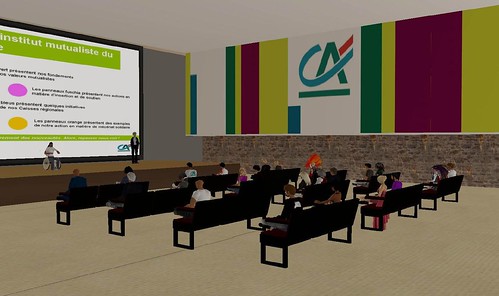
The IBM Green Data Center in Second Life
Episode 2 of the GreenMonk Podcasts – 27 mins 27 secs
My guest on this podcast is IBM’s Vik Chandra. According to IBM Vik
is currently responsible for Market Management and Strategy for IBM software offerings that enable organizations to reduce their energy consumption and environmental impact. IBM’s software group offers middleware from its Tivoli, Rational, WebSphere, Lotus and Information Management brands.
I was interested to know how Vik felt software could help companies reduce their carbon footprint so I invited him to come on the show to discuss this and also to answer questions I solicited from readers of this site.
Here are the questions I asked Vik and the approx. times I asked them:
It is easy to see how more efficient hardware can help drop a company’s energy use but how is software helping companies reduce their carbon footprint? – 00:20
Demand response – the ability to have devices adjust their settings dynamically in response to pricing signals from utilities etc is recently gaining a lot of attention. Is this something IBM are looking into? 03:23
Questions from readers:
Chris Dalby
Are there any plans to expand the current cost craze that has hit Hursley? With rising energy and utility costs in general, are there plans to help companies intelligently manage and automate their energy infrastructure using mqtt? – 05:57
Alan in Belfast
As CPU/core speeds increase, software has become more and more processor hungry, driving up heat, fan, power etc. Energy efficient machines – even Eee PC 1000s! – start to alter the processor speed to keep power demands down. Are IBM serious about de-bloating their software to make it more light-weight? And do they have any feel for whether that could make a 1% difference or a 20% difference to desktop/laptop/server power usage? – 08:14Is it more efficient to build features into hardware or software? A lot of the enterprise monitoring software that gets installed to instrument PCs/servers runs continuously. Better to make lighter hardware modules to do the same? Is there a day when a Linux-on-a-chip (etc) will be embedded in PCs/servers as a more energy-efficient method of performing these tasks? (Bring back the PIC chip!) – 10:28
Jim Spath
We’re moving toward more virtualization, currently running IBM AIX on Power5 LPARs, starting to run virtual CPUs, memory, storage and I/O. What are the limiting factors for software licensing in such a landscape? It seems we save money on hardware but pay more for software that could run in different frames.
I think Linux is a partial answer, but there are corporate concerns with having multiple OS images, not to mention uneasiness about GNU and BSD license models. – 14:23Jim Hughes
I see plenty of power management software going into desktop and laptop PCs (clock slowing, fans that run only when necessary etc.), but precious little into servers.As many enterprises appear to be shuffling ever more equipment into noisy, over heating server rooms, surely power (and noise) management should be a big issue here.
Are IBM ignoring servers because they’re hidden away from all but the long suffering sys admins? – 17:01
Ed Gemmell
Of the $1 billion IBM said they would invest in Green IT. How much has already been invested (can we see it in the financials?) and how much has been in Software. What do you have to show for the $1billion so far? – 21:31Uldis Boj?rs
It would be interesting to learn more about what is IBM’s experience and lessons learned in enterprise use of new social media and collaboration tools such as microblogging and virtual 3D worlds. – 25:58
Download the entire interview here
(25.1mb mp3)

